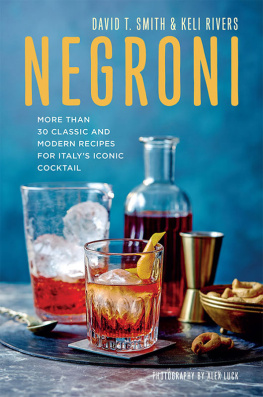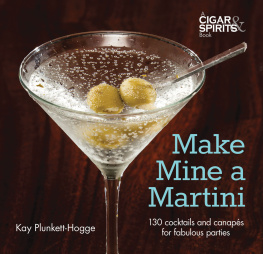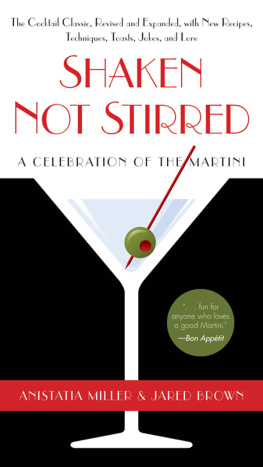THE MARTINI
Perfection in a Glass
Matt Hranek

New York

To all the bartenders who have served me a perfect martini
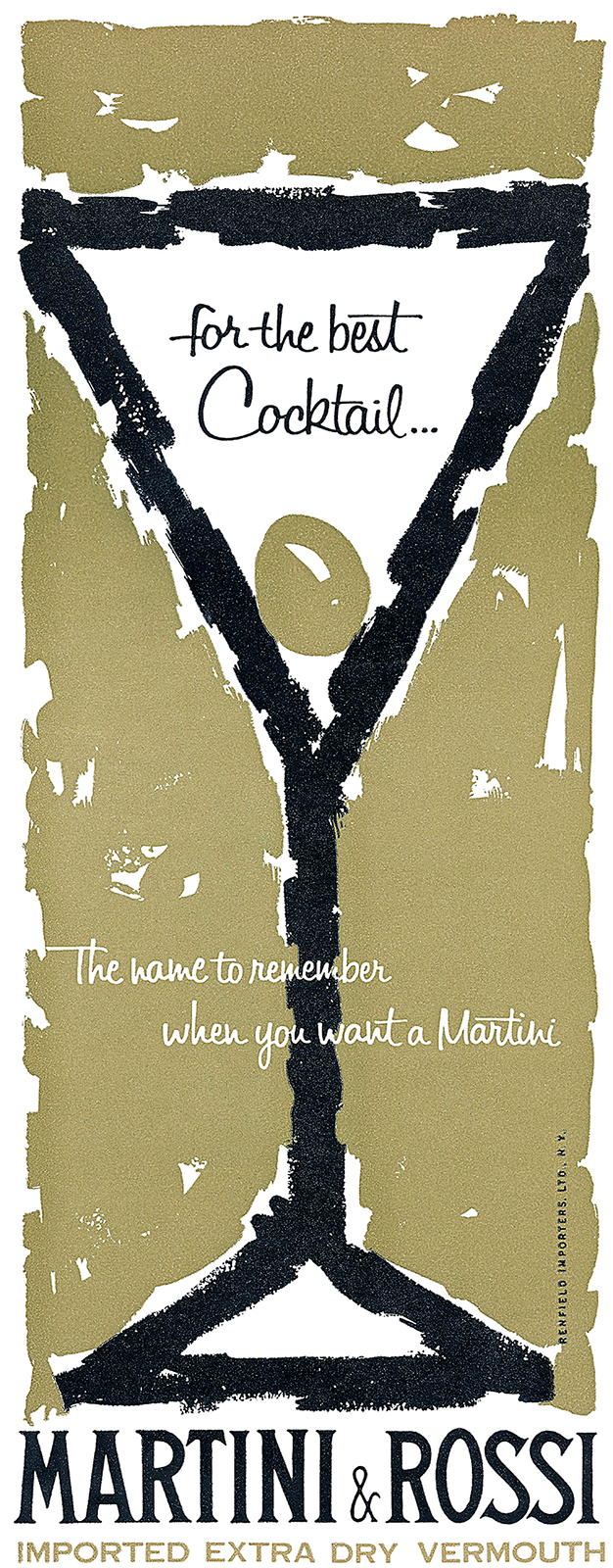
Contents
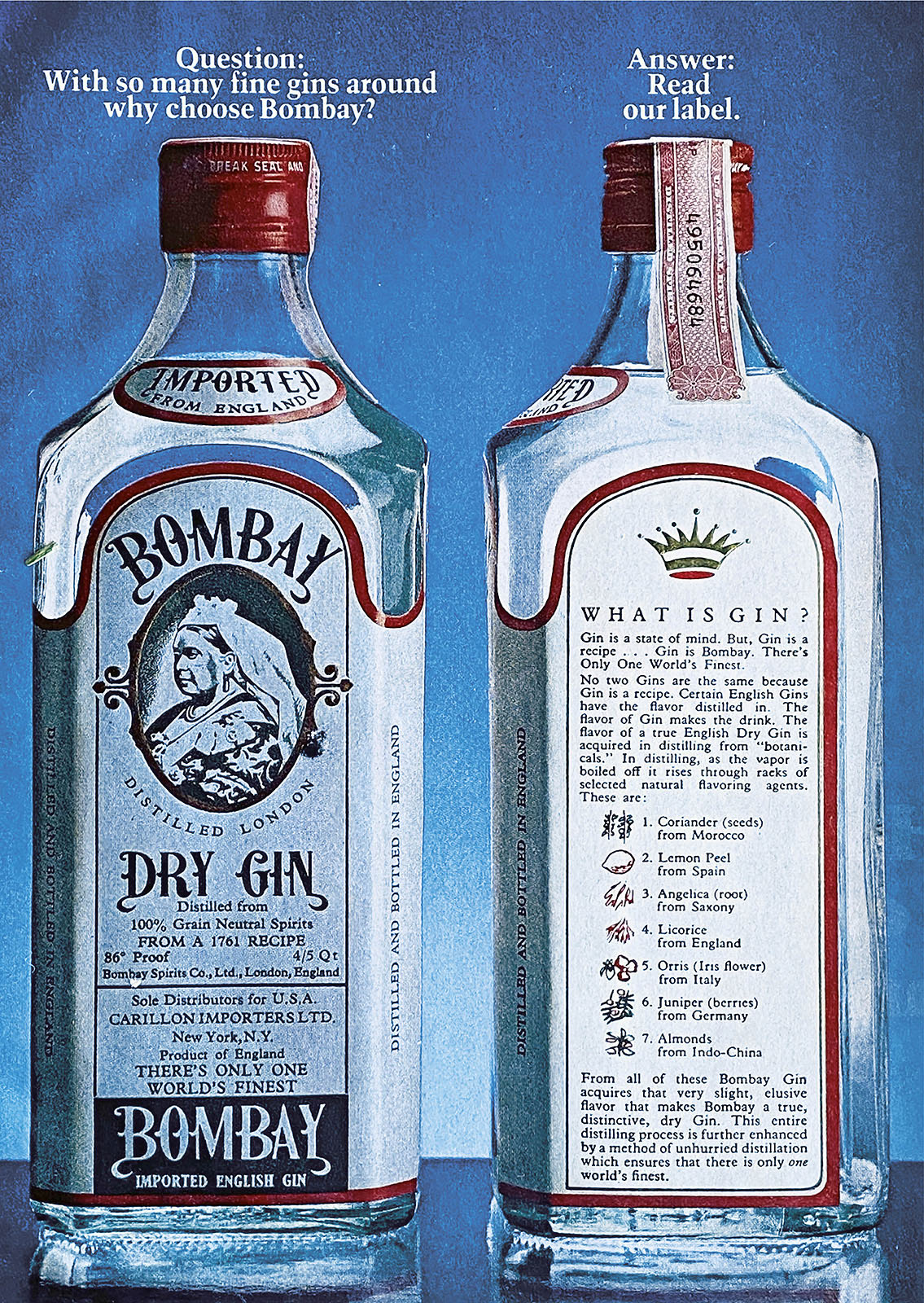
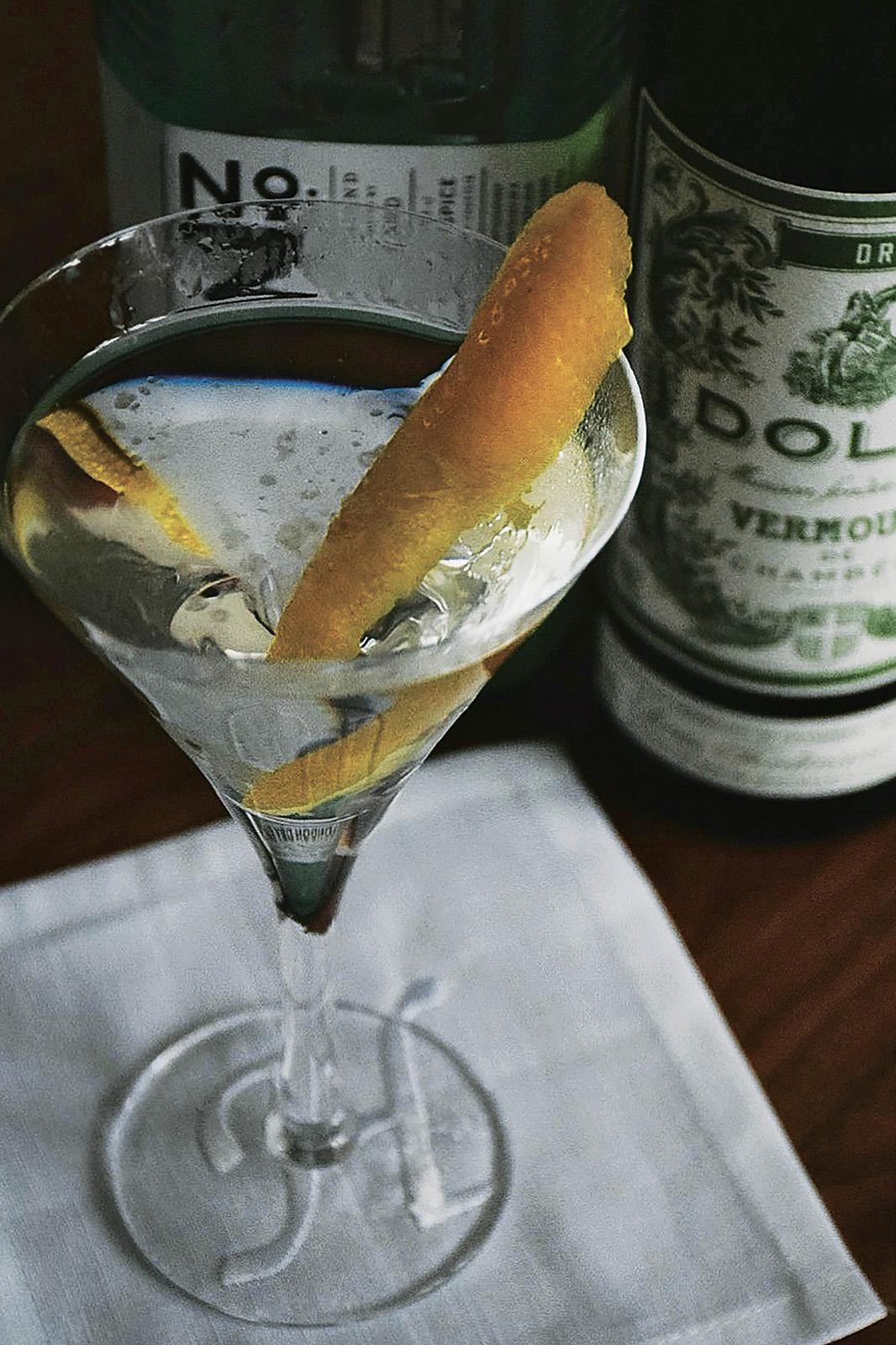
Preface

At this point in my adult life, drinking resembles a day at the track. Its a thoroughbred race of sortsfast out of the gate, followed by a mad dash to a quick buzzrather than an all-day marathon of sipping one beer after another toward a long, slow burn.
Life is short, and time feels of the essence. My tastes, metabolism, and schedule have changed since my college days. I dont have the time or inclination to dillydally, and all that beer no longer appeals to me (or my waistline).
Thankfully, I have fallen in love with the martini (or the marty, as we call it in my house), which consistently has me off and running with speed, elegance, and style. En route from one place to the next, I follow the silhouette of a martini glass (the international symbol for cocktail) on signage throughout any airport just before a flight.
My father drank his gin with tonic, so my early exposure to the martini was mostly through cinema. Hollywood has always loved the martini, casting it in a supporting role in countless classic movies, from those directed by Billy Wilder to any of the Bond films.
I started ordering martinis when I could first afford them, shortly after moving to New York City in the early 1990s, as a way to look sophisticated on dates. Since I favored places where martinis were served very dry (read: mostly gin) in oversize (10-ounce/300 ml+) glasses, just one got me feeling confident quite quickly (read: cheap date). The martini soon became one of my go-to cocktailsthe Negroni being the other.
My most memorable martini was at Temple Bar on Lafayette Street (now long gone, sadly). The bar felt like an elegant yacht interior: dimly lit, with dark-wood walls and heavy velvet curtains. They served popcorn with crisp shreds of fried sweet potato and beet at the barvery salty, to encourage more drinking. The martini glasses were big, chilled, and filled to the brim with the coldest and driest of drinks. There was a sense of glamour and fun surrounding Temple Bar (and the martinis) that I just had to be a part of.
Dating back to the mid-nineteenth century, the martini is one of the worlds most popular cocktailsand with good reason. It is sophisticated, evocative, and delicious. Making a martini is simplicity itself, requiring just two (not counting the garnish) basic ingredients: gin and vermouth. No special tools or expertise are required. After an especially taxing day, there is perhaps no greater pleasure than mixing and sipping a cold one. It announces that the day is over and you have earned your drink, the reward for a job well done.
As with the Negroni, the origin of the martini is steeped in mystery and intrigue, with more than a few unverified theories as to how and where it came to be. Some claim the martini was invented in (and named for) the town of Martinez, California ( for the namesake recipe), while others credit Martini & Rossi for coining the name of the drink. Other aficionados attribute it to a San Francisco bartender named Jerry Thomas, while some point to New York Cityspecifically the Knickerbocker Hotelas home to the very first martini. Honestly, since Im never as interested in the drink that came first as I am in my next one, this book will not waste your time exploring and debating the competing origin stories. Rather, it celebrates the martinis I have come to love over the years, and the places I have discovered in which to best enjoy them.
There is not one proper martini recipe, per se. For me, the ideal martini is made with gin, served ice cold and bone-dry, with a twist. By definition, a martini includes gin, and it should not need to be qualified as such. A vodka martini is just thata variation on the original. The use of the term gin martini is a retronym, a phrase created to avoid confusion between the standard and a later version. (Similar phrasing is used to describe an acoustic guitar, for example, or an analog watch.)
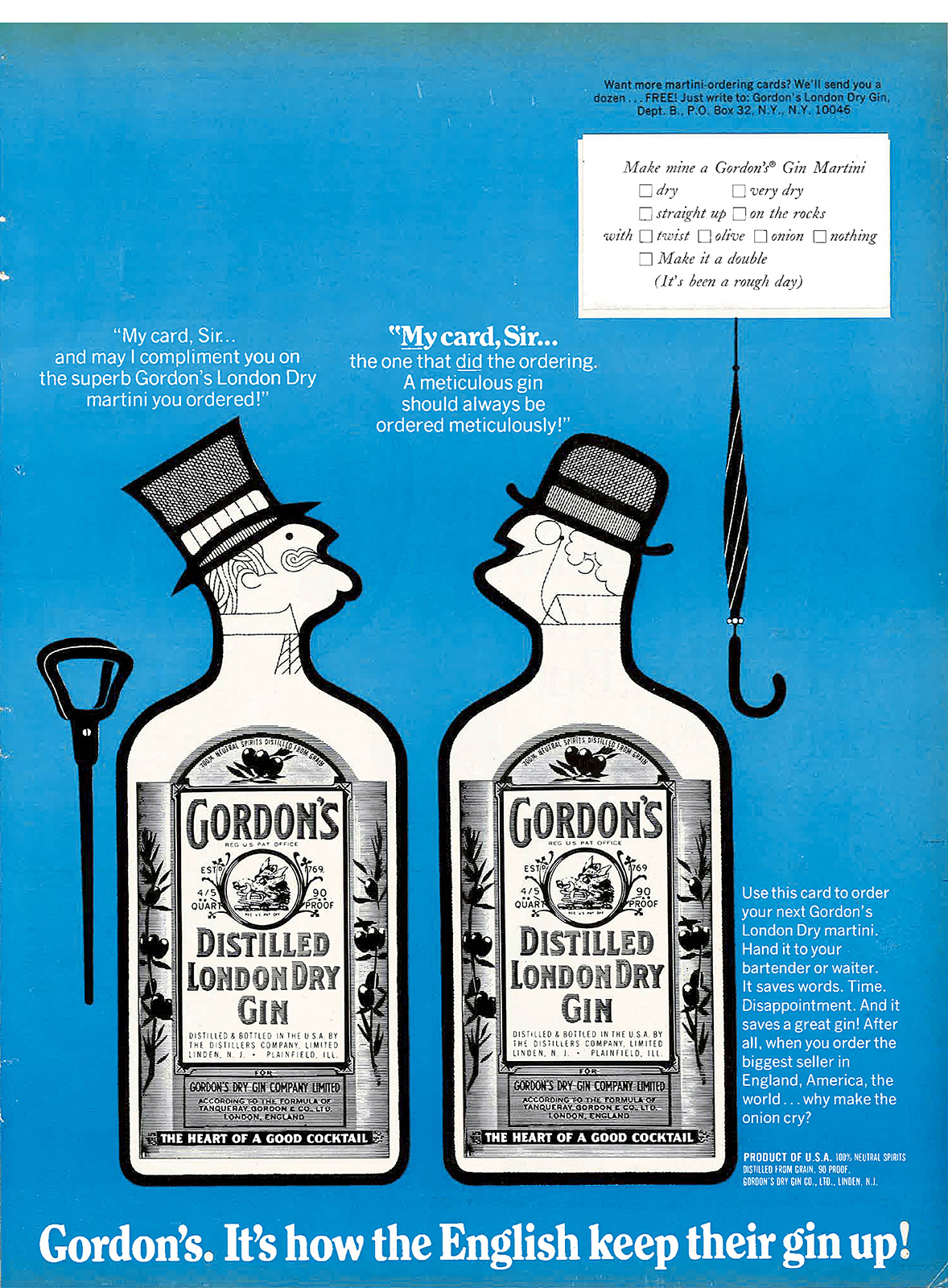
Occasionally Ive been served a lousy martini, but that hasnt deterred me. When one is prepared with thought and care, there is nothing closer to perfection in a cocktail. I have tasted martinis in countless airport bars, hotels, and restaurants, crafted by bartenders all over the globe. I have also heard tell of various well-known figures who love the martini as much as I do, from President Franklin Delano Roosevelt to the writer Dorothy Parker, each pontificating on the glories of this iconic drink. Ultimately, I identify most with the following assessment, from Homer Simpson, in reference to his favorite bartender: He knows just how I like my martinifull of alcohol.
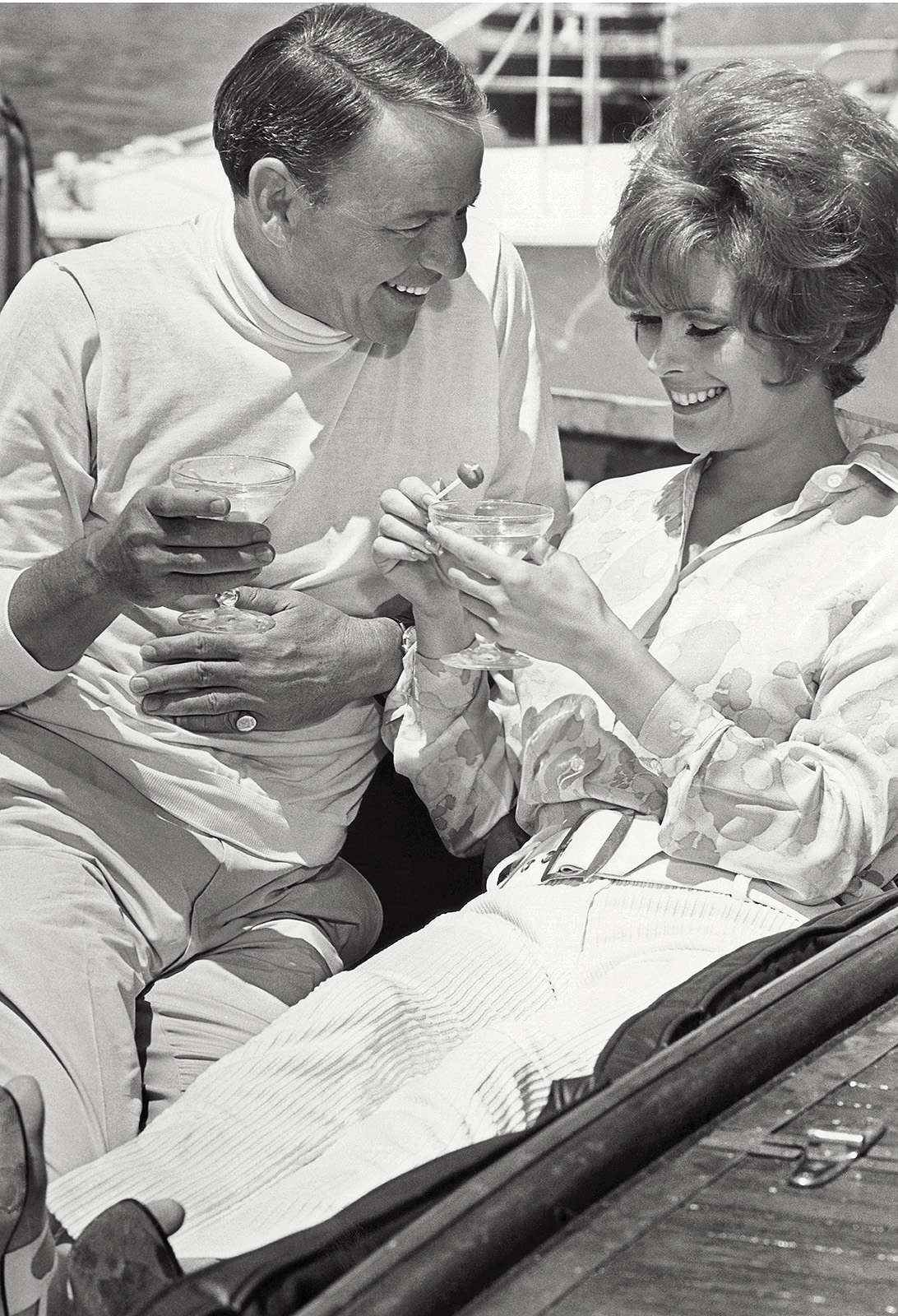
Frank Sinatra and Jill St. John in Tony Rome , 1967

T he martini is as simple as it is sophisticated. Because you need just a few ingredients to mix one, its worth seeking out excellent examples of each, and combining them with the right amount of care. You have a bit more license with your choice of garnishes, the best of which offer a sharp, crisp counterpoint to the gina bright twist of lemon peel, say, or a bracing, briny olive. If you are new to the drink, experiment to see what you like best. Or, if youre like me, you might switch gears depending on the place and situation you find yourself in.
The Gin

The key to the martinis flavor is its primary component, the gin (or, more specifically, the juniper that gives it its name). The spirit originated in the Netherlands, as a variant of genever (sometimes spelled jenever, which comes from the Dutch word for juniper).
The earliest versions of genever were crudely distilled from malt wine. These primitive spirits were definitely rougher around the edges than modern-day gins, bearing more resemblance to whiskey, though not quite as palatable. They needed some polishing, so distillers added botanicals and herbs to increase their appeal, taking an especially generous hand with the juniper.
Since juniper was thought to have healing properties, early genevers (from about the sixteenth century) were used medicinally. British soldiers battling wars in the Netherlands around that time discovered the spirits and developed a taste for them. They brought genever back to England with them, and the British public soon developed a taste for it too. Once its popularity was established, English distillers began producing their own version of genever, altering its composition and shortening the name to gin. Eventually they created a clear, more smooth grain alcohol than the Dutch original, with a pronounced juniper flavor. Today, we know this as London dry gin, my unequivocal choice for a martini.



